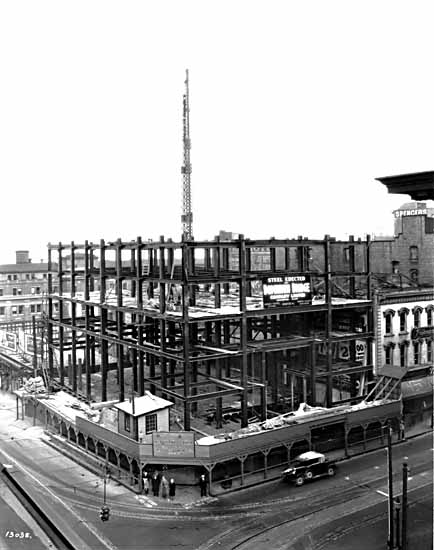Auckland's Accidental Art Scene: Road Works as Social Commentary
Auckland, New Zealand, a city known for its stunning harbors and vibrant culture, has inadvertently become home to a unique and evolving art form: road work sculptures. These temporary installations, composed of traffic cones, barriers, and other construction paraphernalia, often arranged in seemingly haphazard ways, have begun to function as unintentional social satire, reflecting the frustrations and absurdities of urban life. What started as mere traffic management has morphed into a form of public art, sparking conversations and eliciting both amusement and exasperation from residents.
The sheer ubiquity of road works in Auckland contributes to this phenomenon. As the city grows and infrastructure struggles to keep pace, construction sites become a constant presence. The resulting maze of cones and barriers, while intended to guide and protect, often feels chaotic and disruptive. This constant state of flux provides fertile ground for the emergence of accidental art, as workers and even passersby unconsciously arrange these elements into visually striking, and sometimes ironically humorous, compositions.

The Unintentional Artist: City Planners and Construction Crews
While no one is explicitly claiming the title of 'road work artist,' the city planners and construction crews are, in effect, the creators of these temporary installations. Their decisions about placement, arrangement, and the sheer volume of materials used contribute to the overall aesthetic. Often, the arrangements seem to defy logic, creating bottlenecks and confusing detours that become fodder for local humor. The contrast between the intended purpose of these objects – safety and efficiency – and their actual impact – often inconvenience and delay – is a key element of the satire.
Consider the towering stacks of cones that seem to appear overnight, or the elaborate barrier systems that snake through entire neighborhoods. These structures, while functional, also possess a certain visual weight, demanding attention and prompting reflection on the nature of urban development and its impact on daily life. The impermanence of these installations further adds to their artistic appeal. Like sand mandalas, they are destined to be dismantled and reconfigured, leaving only memories and photographs behind.

Decoding the Cone-versation: Interpreting the Satire
The satirical element of Auckland's road work art lies in its ability to highlight the disconnect between official narratives and lived experiences. City planning documents often tout progress and efficiency, while residents grapple with traffic jams, detours, and the constant noise of construction. The seemingly absurd arrangements of cones and barriers become a visual representation of this disconnect, a silent commentary on the challenges of urban growth.
Furthermore, the temporary nature of these installations mirrors the fleeting nature of urban life itself. Buildings rise and fall, neighborhoods change, and the city is in a constant state of evolution. The road work sculptures, with their impermanence and inherent disruption, serve as a reminder of this constant flux, prompting us to question the direction of progress and the impact of development on our communities.

Beyond the Barriers: Community Engagement and Artistic Expression
While the road work sculptures are largely unintentional, they have sparked a degree of community engagement and even inspired deliberate artistic interventions. Residents have been known to rearrange cones into humorous formations, adding their own layer of commentary to the existing landscape. Social media is filled with images of these impromptu installations, shared with witty captions and humorous observations.
Some artists have even begun to incorporate road work materials into their own creations, transforming the mundane objects of urban infrastructure into works of art. This appropriation of everyday objects is a common theme in contemporary art, and the use of road work materials adds a layer of social commentary, highlighting the pervasive influence of construction and development on our lives. Consider the potential for a public art project that actively engages with road work sites, transforming them into temporary canvases for creative expression.

Navigating the Future: From Frustration to Appreciation
Ultimately, Auckland's road work sculptures offer a unique lens through which to view the city's ongoing development. While the initial reaction to road works is often frustration, recognizing the unintentional artistic value of these temporary installations can shift our perspective. By appreciating the humor and satire inherent in these cone-structive commentaries, we can engage in a more meaningful dialogue about the challenges and opportunities of urban growth.
Perhaps, in the future, city planners and construction crews could even collaborate with artists to create more deliberate and engaging road work installations. By embracing the potential for artistic expression, Auckland could transform its ubiquitous road works from a source of frustration into a source of civic pride and creative inspiration. The city could even host a competition for the most creative and thought-provoking road work arrangement, further solidifying its reputation as a hub for innovation and artistic expression. As Auckland continues to evolve, its road work sculptures will undoubtedly continue to offer a unique and insightful commentary on the ever-changing urban landscape.
For those interested in exploring Auckland's art scene beyond the roadworks, consider visiting the Auckland Art Gallery Toi o Tāmaki or exploring the public art installations along the Auckland Waterfront.

So next time you're stuck in traffic, take a closer look – you might just find a smile and a deeper connection to your city in those humble orange cones. Who said Auckland is boring? 😊
-JAFA
Comments
Post a Comment